Hall Interior: Designing a Welcoming Space
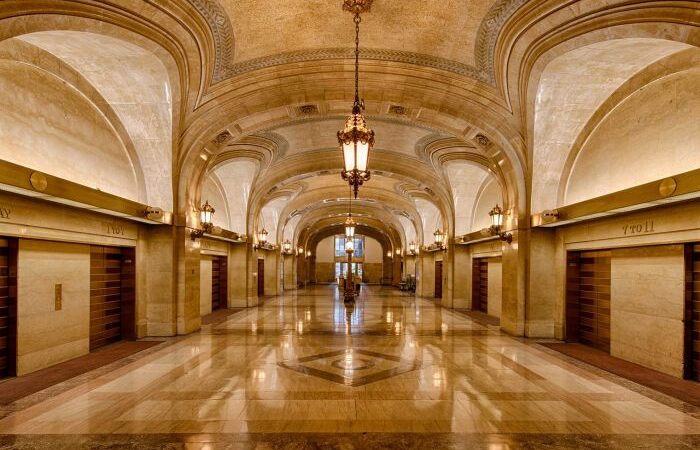
Hall interior design is a fascinating field that blends functionality with aesthetics. From the moment you step inside a hall, the design elements create a first impression, influencing your mood and experience. Whether it’s a grand entrance hall or a cozy hallway, careful consideration of lighting, flooring, color palettes, and decorative accents can transform a space into a welcoming and inviting area.
This exploration delves into the various aspects of hall interior design, from understanding the key design elements to exploring different styles and functionalities. We’ll uncover the secrets to creating a hall that not only serves its purpose but also reflects your style and enhances the overall ambiance of your home.
Hall Interior Design Elements
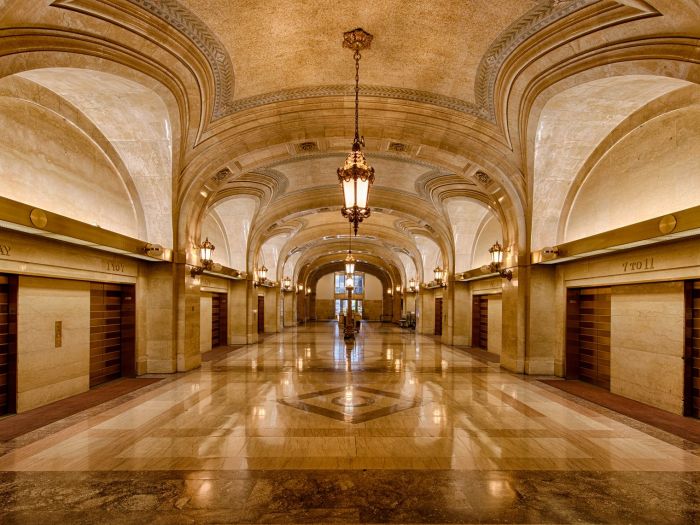
A hall is the first space that guests encounter in your home, making it a crucial area for creating a welcoming and memorable impression. Thoughtful design elements can transform a simple hallway into a stylish and functional space.
Lighting for Functionality and Ambiance
Lighting plays a pivotal role in shaping the atmosphere and functionality of a hall. Proper illumination enhances safety, highlights architectural features, and creates a sense of warmth and invitingness.
- Natural Light: Maximize natural light by using large windows or skylights, if possible. This creates a bright and airy atmosphere, reducing the need for artificial lighting during the day.
- Layered Lighting: Combine different types of lighting for a balanced and versatile approach.
- Ambient Lighting: Overhead fixtures like chandeliers, pendant lights, or recessed lighting provide general illumination.
- Task Lighting: Sconces or wall-mounted lights near entryways, staircases, or artwork provide focused light for specific areas.
- Accent Lighting: Track lighting, spotlights, or strategically placed lamps can highlight artwork, sculptures, or architectural details, adding visual interest.
- Dimmable Lighting: Choose dimmable light fixtures to adjust the mood and ambiance according to the occasion. Soft, warm lighting creates a cozy and inviting atmosphere, while brighter lighting is suitable for daytime use.
Flooring Options for Halls
The choice of flooring significantly impacts the hall’s aesthetics, durability, and overall feel. Consider the following options, each with its advantages and disadvantages:
- Hardwood Flooring:
- Pros: Classic, elegant, durable, and easy to maintain.
- Cons: Can be expensive, susceptible to scratches, and may be cold underfoot.
- Tile Flooring:
- Pros: Durable, water-resistant, easy to clean, and comes in various styles and colors.
- Cons: Can be cold and hard underfoot, and may be noisy.
- Carpet Flooring:
- Pros: Soft, comfortable, and sound-absorbing, providing warmth and a cozy feel.
- Cons: Can trap dust and allergens, requires regular cleaning, and may not be suitable for high-traffic areas.
- Laminate Flooring:
- Pros: Affordable, durable, and easy to install, available in various wood-look finishes.
- Cons: Not as durable as hardwood, may not be as aesthetically pleasing.
Color Palette for Hall Interiors
The color scheme you choose can significantly influence the overall mood and ambiance of your hall.
- Neutral Colors:
- Pros: Create a sense of spaciousness, provide a neutral backdrop for furniture and artwork, and are timeless and versatile.
- Examples: White, cream, beige, gray, and light brown.
- Bold Colors:
- Pros: Add personality and vibrancy to the space, create a focal point, and can be used to highlight specific areas.
- Examples: Deep blues, rich greens, vibrant reds, or sunny yellows.
- Complementary Colors:
- Pros: Create visual interest and contrast, enhance the overall design, and can be used to create a balanced and harmonious space.
- Examples: Blue and orange, green and red, purple and yellow.
Decorative Elements for Hall Interiors
Decorative elements can add personality and visual interest to a hall, transforming it from a simple passageway to a stylish and inviting space.
- Wall Art:
- Paintings, prints, photographs, or tapestries can add color, texture, and a personal touch to the walls.
- Consider the size and scale of the artwork about the hall’s dimensions.
- Mirrors:
- Mirrors can create the illusion of space, reflect light, and add a touch of elegance.
- Strategically placed mirrors can enhance natural light and make the hall appear larger.
- Sculptures:
- Sculptures can add dimension and a sense of artistry to the space.
- Choose sculptures that complement the overall style and color scheme of the hall.
Hall Interior Styles
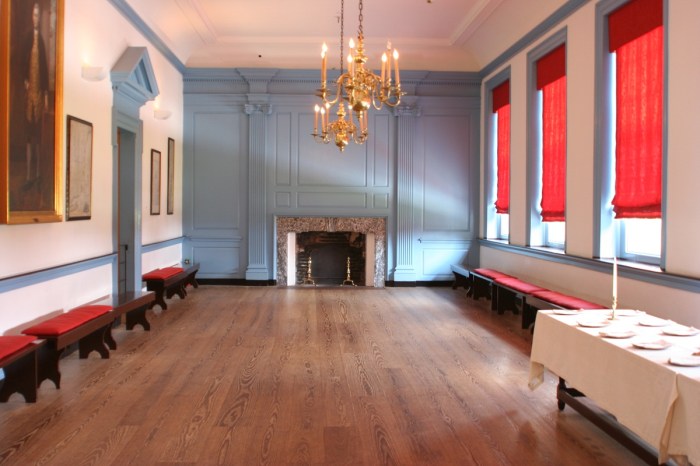
A hall, often the first space guests encounter, sets the tone for the entire home. Choosing the right style for your hall can be as exciting as designing any other room. From classic to contemporary, each style offers a unique way to express your personality and create a welcoming atmosphere.
Comparing Hall Interior Styles
Different hall interior design styles cater to diverse aesthetics and lifestyles. Understanding the key differences between them can help you make an informed choice for your space.
- Modern: Characterized by clean lines, minimalist furnishings, and a focus on functionality. Modern halls often feature neutral color palettes, geometric patterns, and natural materials like wood and metal.
- Traditional: Embraces classic elegance with ornate details, rich fabrics, and timeless furniture pieces. Traditional halls typically feature warm color palettes, intricate moldings, and a sense of history.
- Minimalist: Emphasizes simplicity and functionality, with a focus on essential elements and a decluttered aesthetic. Minimalist halls often feature a limited color palette, sleek furniture, and an absence of unnecessary ornamentation.
- Eclectic: Blends different styles and influences to create a unique and personalized space. Eclectic halls often feature a mix of patterns, textures, and colors, reflecting the homeowner’s diverse interests and tastes.
Designing a Modern Hall Interior
A modern hall interior prioritizes simplicity and functionality.
“Less is more”
Is a guiding principle in this style.
- Color Palette: Neutral colors like white, gray, and black are commonly used, with pops of vibrant accents for contrast.
- Materials: Natural materials like wood, metal, and stone are favored for their clean lines and durability. Glass and acrylic elements can add a touch of sophistication.
- Furniture: Sleek and functional furniture pieces are preferred, with clean lines and minimal ornamentation. A contemporary console table, a minimalist mirror, and a modern coat rack are common features.
- Lighting: Geometric pendant lights or track lighting can illuminate the space efficiently while adding a modern touch.
- Decor: Minimalist artwork, sculptures, or plants can add visual interest without overwhelming the space.
Historical Influences and Cultural Inspirations
Hall interior styles are often influenced by historical periods and cultural movements.
- Traditional: Rooted in the Renaissance and Victorian eras, with influences from European aristocracy and the emphasis on craftsmanship and ornate details.
- Modern: Emerged in the early 20th century as a reaction against the ornate and elaborate styles of the past. Inspired by industrial design and functionalism, with a focus on simplicity and clean lines.
- Minimalist: Developed in the mid-20th century, drawing inspiration from Japanese aesthetics and the philosophy of Zen. Emphasizes simplicity, functionality, and a focus on essential elements.
- Eclectic: Blends various styles and influences, reflecting the diverse cultural landscape of the modern world. Often draws inspiration from global design trends and personal preferences.
Hall Interior Style Characteristics
| Style | Color Palette | Materials | Furniture |
|---|---|---|---|
| Modern | Neutral with pops of vibrant accents | Wood, metal, stone, glass, acrylic | Sleek, functional, clean lines |
| Traditional | Warm, rich colors | Wood, fabric, metal | Ornate, handcrafted, timeless |
| Minimalist | Limited, neutral colors | Natural materials, simple finishes | Simple, functional, essential |
| Eclectic | A mix of colors and patterns | Variety of materials | Unique, personalized, blend of styles |
Hall Interior Functionality
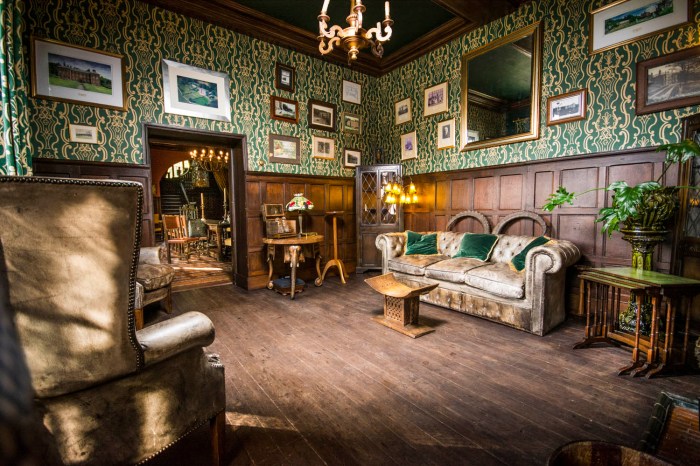
A hall interior is more than just a space to walk through. It’s a vital part of your home, serving a multitude of purposes and influencing the flow of your daily life. The functionality of a hall interior goes beyond aesthetics, encompassing practical considerations that impact both convenience and overall living experience.
Key Functional Requirements
The functional requirements of a hall interior are driven by the needs of the people using it and the specific purpose it serves. These requirements often include:
- Storage: Hallways can be excellent locations for storage solutions. From built-in cabinets and shelves to coat racks and shoe organizers, strategic storage helps keep the hall organized and clutter-free.
- Seating: A comfortable seating area in the hall can provide a convenient spot to put on shoes, wait for guests, or simply take a break. This could be a small bench, a set of chairs, or even a built-in window seat.
- Traffic Flow: Smooth and efficient traffic flow is crucial in any hall. Consider the width of the space, the placement of furniture, and the potential for congestion during peak times. A well-designed hall interior facilitates easy movement and prevents bottlenecks.
Layout Planning
A well-planned layout is essential for optimizing space utilization and functionality. Here are some key aspects to consider:
- Maximizing Space: Utilize corners and vertical space effectively. Consider using built-in storage solutions to minimize floor space usage. Employ mirrors to create an illusion of a larger space.
- Defining Zones: If the hall is large, consider dividing it into zones for different functions, such as a seating area, a storage zone, and a traffic corridor. This helps create a sense of order and facilitates easier navigation.
- Flexibility: Consider the potential for future changes. Choose furniture and storage solutions that can be easily rearranged or modified as your needs evolve.
Integrating Technology
Modern technology can enhance the functionality and convenience of a hall interior:
- Smart Lighting: Automated lighting systems can adjust to the time of day, your presence, or even your preferences. Motion sensors can automatically illuminate the hallway when you enter, and dimmable lights can create a cozy ambiance.
- Home Automation: Smart home systems can integrate with your hall interior, allowing you to control lighting, temperature, and even security remotely. This can create a more comfortable and secure living environment.
- Security Systems: Security cameras, doorbells, and motion detectors can be integrated into the hall to enhance security and provide peace of mind.
Considering Intended Use and Target Audience
The intended use and target audience plays a crucial role in designing a functional hall interior.
- Family Homes: Prioritize safety, durability, and ease of cleaning. Consider features that cater to children, such as low-hanging hooks, kid-friendly storage, and non-slip flooring.
- Multi-Generational Homes: Design the hall with accessibility in mind, including wider doorways, handrails, and easy-to-reach storage solutions.
- Apartments: Focus on maximizing space, minimizing clutter, and creating a welcoming first impression for guests.
Hall Interior Inspiration

A hall, being the first space visitors encounter, sets the tone for the entire home. Drawing inspiration from various sources can help you create a hall that reflects your style and welcomes guests with warmth and sophistication.
Hall Interiors Through the Ages
Exploring hall interiors from different architectural periods reveals the evolution of design and the influence of historical trends.
- Victorian Era (1837-1901): Victorian halls often featured grand staircases, ornate moldings, and dark wood paneling. These spaces exuded opulence and grandeur, reflecting the Victorian era’s love for elaborate details and craftsmanship.
- Art Deco (1920s-1930s): Art Deco halls embraced geometric patterns, sleek lines, and metallic accents. This style was characterized by its bold use of color and its emphasis on modern materials like chrome and glass.
- Mid-Century Modern (1940s-1960s): Mid-century modern halls favored clean lines, simple forms, and natural materials. They often incorporated built-in storage solutions and a focus on functionality, reflecting the era’s embrace of minimalism and practicality.
Cultural and Regional Influences on Hall Design
Hall interiors around the world showcase diverse aesthetic sensibilities and cultural traditions.
- Japanese: Japanese halls often feature tatami mats, shoji screens, and minimalist furnishings. This approach emphasizes simplicity, natural materials, and a sense of tranquility.
- Moroccan: Moroccan halls often incorporate intricate tilework, arched doorways, and vibrant colors. The use of rich fabrics, lanterns, and decorative elements creates a sense of warmth and exoticism.
- Scandinavian: Scandinavian halls typically prioritize light, airy spaces with minimal clutter. They often feature white walls, natural wood furniture, and soft textures. This style emphasizes functionality and a sense of calm.
Current Trends and Innovations in Hall Interior Design
Modern hall interiors are influenced by evolving trends and technological advancements.
- Smart Home Technology: Smart home devices like voice assistants, smart lighting, and security systems are increasingly integrated into hall designs, creating a more connected and convenient living experience.
- Sustainable Materials: There’s a growing emphasis on using sustainable and eco-friendly materials like reclaimed wood, bamboo, and recycled glass. This trend reflects a conscious effort to reduce environmental impact and promote responsible design.
- Multifunctional Spaces: Hallways are no longer just passageways. They are being transformed into multi-functional spaces that incorporate work areas, reading nooks, or even mini-gardens. This trend reflects the increasing need for flexible and adaptable living spaces.
Hall Interior Mood Board
A mood board can be a powerful tool for visualizing different hall interior design concepts. Here’s a sample mood board showcasing diverse colors, textures, and materials:
- Color Palette: The mood board features a range of colors, from warm neutrals like beige and cream to bold accents like emerald green and deep blue.
- Textures: The mood board incorporates a variety of textures, including smooth marble, rough-hewn wood, and soft velvet.
- Materials: The mood board showcases a mix of materials, such as natural stone, metal, and woven textiles. These materials add depth and visual interest to the design.
Epilogue
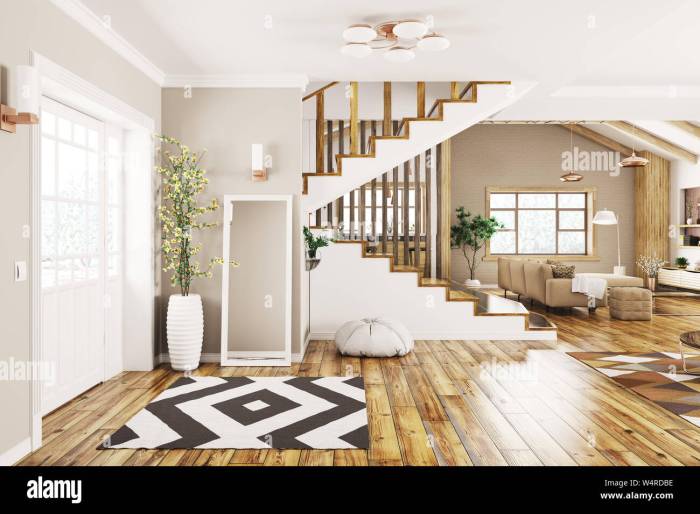
Designing a hall interior is an exciting journey that allows you to express your creativity and personalize your space. By understanding the fundamentals of design, incorporating your style, and considering the functionality of the space, you can create a hall that is both aesthetically pleasing and a welcoming haven for you and your guests.
Whether you’re aiming for a modern, traditional, or eclectic aesthetic, the key is to create a space that resonates with your unique taste and enhances the overall experience of your home.
Comments are closed.